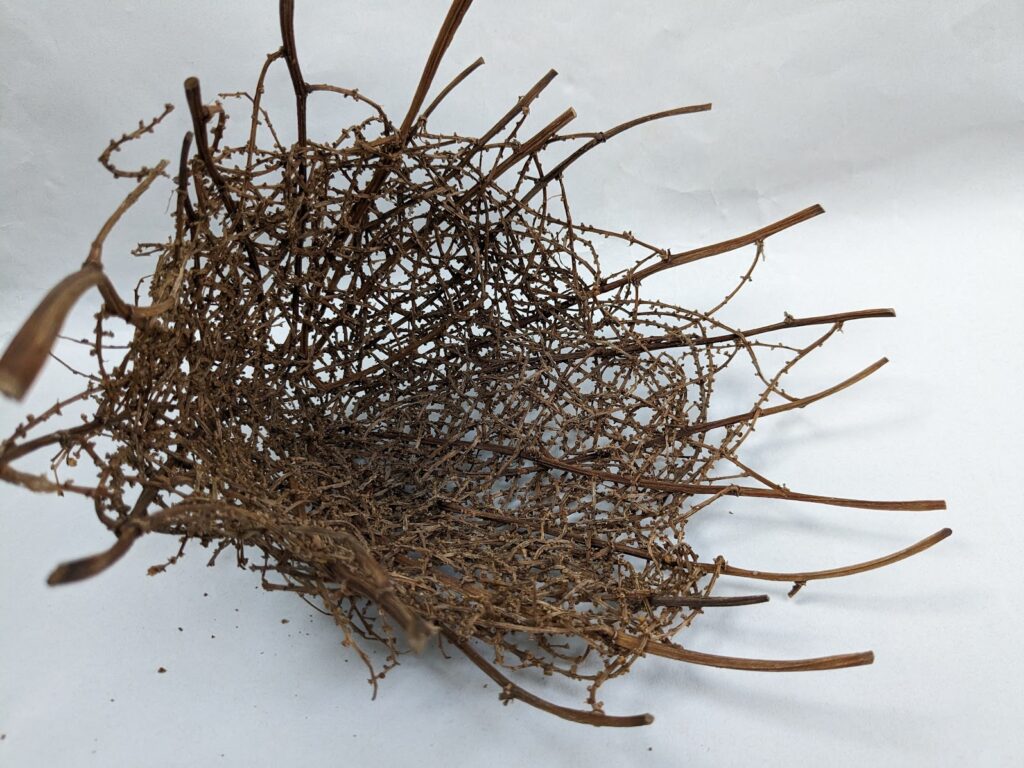We recently had the fence between our front garden and that of our neighbour replaced, as it was in a sorry state. Sadly, many of the climbers and plants close to the fence did not survive the operation, but it also turned out that our neighbour’s garden was home to an incredible amount of bindweed, which of course I offered to rescue. 🙂
As I sat on the doorstep pulling off the leaves and coiling it into bundles I did get some strange looks from the builders. But when working with foraged fibres you often have to develop a thick skin and certain level of shamelessness!


And it is very satisfying when you can turn a hated weed into a thing of beauty.

Something that had been hanging around much longer in my fibre collection was an inflorescence (flower stalks and bracts) from a cordyline tree. I’ve often looked with envy at the enormous inflorescences of the bangalow palm used by Australian basketmakers such as Catriona Pollard to make random weave sculptures. The cordyline inflorescence is tiny by comparison, and it seemed very brittle, so I wasn’t sure how well it would work.

Surprisingly, after soaking for only about 10 minutes it was wonderfully pliable. The knobbly flower bracts made weaving a bit tricky, and many of them fell off, but they did help hold the strands in place and added extra texture.
Because the strands are relatively short, the weaving had to be fairly dense. I didn’t take any photos as I went along – too engrossed in weaving! – but here’s the end result.



Now that it’s dried again it feels fairly fragile. But it is a salutary reminder that with basketry it is always worth having a go with whatever local materials you have to hand.

Loving the bindweed weaving Kim. Shall give it a go here in the Dordogne next spring when we return. Our garden here will be full of it once more by then!
Ooh, you lucky thing! 😉
I had a go at making some random weave baskets from bindweed. Unfortunately they seem to have gone mouldy! Any recommendations for preserving them? Thanks.
Where do you live Anne? If you’re in an area with high humidity it can be tricky to prevent mould. Luckily that’s not an issue in London, but after harvesting and drying materials I always store them in paper or fabric bags rather than plastic just in case.
You could try varnishing your baskets. If my pieces are going to be in an exhibition and need to be transported around I usually coat them with diluted decorators’ varnish (dead flat finish) for extra durability. Make sure the piece is completely dry before varnishing. This may also help with your mould problem.